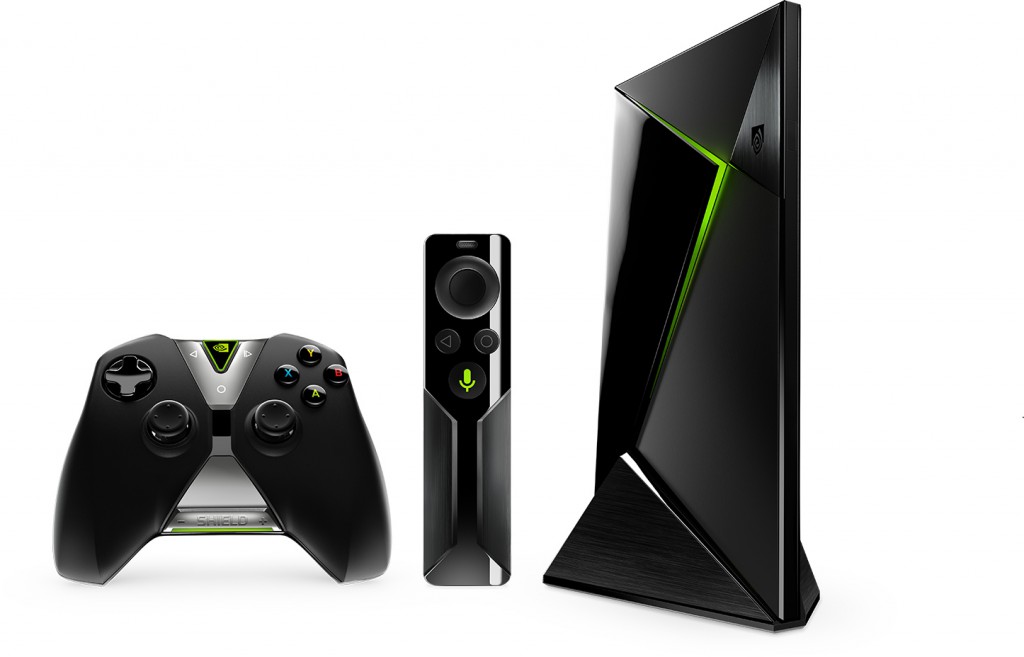 On March 3rd 2015 NVIDIA announced their first entrant into both the living room entertainment and Android TV spaces, the NVIDIA Shield, which is an Android TV powered set to box with a few extras under the hood. Not to be confused with the NVIDIA Shield Tablet or the NVIDIA Shield Portable, the NVIDIA Shield is also known as the NVIDIA Shield Console, NVIDIA Shield TV or most usually (and often by NVIDIA themselves) the NVIDIA Shield Android TV, though I’ll be referring to it as the “Shield TV” from here on out. The somewhat confusing and long winded naming conventions aside, the much anticipated device had arrived, at least in name and specs.
On March 3rd 2015 NVIDIA announced their first entrant into both the living room entertainment and Android TV spaces, the NVIDIA Shield, which is an Android TV powered set to box with a few extras under the hood. Not to be confused with the NVIDIA Shield Tablet or the NVIDIA Shield Portable, the NVIDIA Shield is also known as the NVIDIA Shield Console, NVIDIA Shield TV or most usually (and often by NVIDIA themselves) the NVIDIA Shield Android TV, though I’ll be referring to it as the “Shield TV” from here on out. The somewhat confusing and long winded naming conventions aside, the much anticipated device had arrived, at least in name and specs.
Those lusting after a Shield TV would have to await for the IO keynote on May 28 where NVIDIA launched the product for retail sale during, but not as a part of, the keynote. NVIDIA announced both the standard 16GB version for $199 USD and the rumoured, and temporary listed, Pro version with a hybrid 500GB HDD for $299 USD.
I pre-ordered the pro model from Amazon the instant it went on sale. Unfortunately as the device was shipped to Australia I was ineligible for the Google Play credit or All Access free trial, this wasn’t a surprise as it was listed as USA only. I was however extremely disappointed that I haven’t received a code for Borderlands Prequel as this was not listed as USA only.
Pros:
|
Cons:
|
Hardware
The Shield TV certainly doesn’t skimp on specs, both the standard and pro versions come with and impressive list of specs and features:
- NVIDIA’s latest Tegra chip the X1 an octa-core 64 bit ARM processor with 4 x A57 cores and 4 x A53 low power cores combined with NVIDIAs own graphics GPU based on their Maxwell technology.
- 3 GB of RAM.
- Up to 4K video playback at up to 60 frames per second (after a software update).
- HDMI output with CEC to control compatible TVs.
- Gigabit Ethernet port, 2 x USB 3.0, 1 x Micro USB 2.0, SD Card reader, duel band 802.11ac WiFi with MIMO support, Bluetooth 4.1 with Bluetooth Low Energy and an IR receiver.
The specs were, and are still, the best offering in the Android TV market thus far, earning the Shield TV the self appointed title of Flagship Android TV device.
Storage
The base model comes with 16 GB of storage and the Pro model comes with a whopping 500 GB in a hybrid HDD.
Both models have a SD expansion slot and are compatible with external USB drives via either of the rear USB ports.
In the Box
The Shield TV comes with the set-top box itself, a 40w power adapter, 1 USB cable (very nice one if I may say), 1 HDMI cable and the Shield Controller.
Unlike the current OEMs in the Android TV set top box space who either supply no control device (Razer), and rely on your using a mobile as a remote, or only supply a remote control (Google/ Asus), NVIDIA have positioned this as a gaming system upfront have bundled the game controller in the box with the Shield TV. NVIDIA sell an optional remote with voice search and a headphone jack (also on the game controller); this is a must-get accessory.
The build quality is nothing short of excellent. Brushed metal, soft touch and glossy plastic all adorn the devices in all the right places. Each device feels purposely designed to look and feel great when in use.
Bundled Goodies
As an added bonus NVIDIA is offering a bonus $30 Google Play Credit and a 90 day free subscription to Google Play Music All Access for anyone who purchases a Shield TV before 19 August 2015. Additionally those who outlay the additional $100 USD for the Pro model will get a free copy of Borderlands: The Pre-Sequel when it is released
Unfortunately none of these bonuses are available if you choose to ship the device straight to Australia. I haven’t had confirmation for any other users if they received the bonuses if they used a re-shipper.
Accessories
Shield Controller
Now I am a PC gamer who mainly prefers mouse and keyboard, so both my experience with and opinions on game pads is somewhat limited. I have no feelings regarding the positioning of d-pads and thumbs sticks, I don’t feel a difference in button placement optimization measured in mm. All of that said NVIDIA have made a dame fine controller, especially considering the current range of games I am playing with it.
The Shield Controller is well made, solid but not heavy. It connects via WiFi direct has a 40hr (they say) rechargeable internal battery charged via Micro USB. It has an integrated head phone jack, volume control as well as a microphone for voice search. I have used the game pad to play limited amounts of: Metal Gear Solid Ground Zero, Fallout New Vegas, KTOR, Goat Simulator, Talos Principal and the venerable Crossy Roads.
In these games I experienced no lag (even with the PC streamed games) and found the button placement to be just fine for my level of game pad nerdyness. Additional controllers retail for $59.99 USD which is slightly higher than a Asus Nexus controller however you get significantly more functionality, if less interoperability between other Android devices, for only a few dollars more. If I regularly played multi-player games I would invest in additional Shield Controllers.
Shield Remote
The Shield Remote is a bluetooth remote specifically designed for the Shield TV and Android TV. The device itself is perhaps the best finished of all of the Shield products. It’s precise and cold metal edges feel real in the hand and after just a few days of use you intuitively know where all of the (admittedly limited) buttons are.
The remote is again a rechargeable device (via Micro USB the same high quality cable as for the console which is included in the box) which incorporates a head phone jack for remote listening, a microphone for voice search, volume control, a media d-pad and the back and home buttons. At $49.99 USD its not the cheapest of accessories but well worth the investment.
For more advanced media programs such as Kodi that have a plethora of menus and controls I am impressed that this very simple remote can be used to control 90% of those functions (kudos to the app developers for the Android TV button mapping). Unfortunately the power user options like contextual menus or editing functions don’t seem to be covered and a keyboard is needed, but for the majority of apps and users this will more than suffice.
One can hope that app developers will be able to hook into the voice search API and allow deep linking/ searching of installed content via the voice search functionality.
Shield Stand
The only first party accessory I didn’t purchase was the Shield Stand, at $29.99 USD its not overly expensive but as I was planning on locking the device away in my device cupboard it seemed over the top. Continuing with the premium build quality the stand is engineered out of a single piece of brushed aluminum that matches the highlight in the rest of the shield range.
Aftermarket accessories
The shield having both Bluetooth and 2 USB ports is capable of supporting a myriad of aftermarket keyboards, mice, game pads, headphones and any other accessory that you can reasonably think off. I have tested the Shield TV with every keyboard and mouse (wired, dongled and Bluetooth) in by house and they all work, it is compatible with both my Asus/Nexus game pad and my Microsoft 360 USB PC game pad.
The crown jewel, in my opinion, of the after market accessory support has been the out of the box integration with the Logitech Harmony One range of learning remotes. Having already had a Ultimate One set up at home I was able to simply add the device and a new activity that matched all of the inputs and I was able to flawlessly control the Shield TV via the same remote I was already using.
In addition to automating the switching of my gear to the correct inputs the remote adds additional media controls for skip fast forward, pause etc. There are various hacks around to map even more keys to the device but for the times when I need the power user functions I just pull out my Bluetooth keyboard. You loose voice search using a 3rd part remote but with the Shield remote, controller and the app always nearby that hasn’t been an issue yet.
NVIDIA Services
In addition to providing the hardware NVIDIA have added in a few gaming services to round out their lounge room entertainment/ gaming console competitor.
Game Streaming
If you have a PC with a compatible NVIDIA GTX card and are running the NVIDIA Gaming experience software you are able to stream games locally from your PC to the Shield TV and play them on your TV. I have two main thoughts on this 1. I haven’t tried a game yet that hasn’t loaded 2. keyboard and mouse set up is NOT supported for every game, in fact only games which have been specifically enabled by NVIDIA will support full keyboard and mouse control, from my experimenting it is actually the mouse support that is missing on most titles.
So as a gamer who prefers keyboard and mouse I was simultaneously impressed that all of my games seemed to just stream and disappointed that they didn’t work with my preferred input mechanism. Another issue seems to be with having multiple gaming PCs on the one account or network. I have only once been able to navigate both my laptop and Desktop rig at the same time. NVIDIA have been working out a few bugs with the PC side software so I am taking a wait and see approach to this.
GRID gaming
GRID Gaming is a very interesting service, think Netflix for Games (or is that suppose to be the Uber of gaming?). NVIDIA host instances of major title games and streams the video feed to you whilst simultaneously streaming your input signals back. Unfortunately with my peak internet speed being about 3.5 MB/s I fall far shy of the 5MB/s minimum NVIDIA have set to use the service. I am anxiously awaiting a trip to a friends house with better internet speeds to test the service before the free trial expires.
From all reports the service works well and defiantly provides users with a compelling alternative to purchasing the games and having local rigs powerful enough to play them. The service has 2 tiers with the premium service GRID Plus promising 60 FPS at 1080p, and the lower tier supporting 30FPS at 720p. Reports on the NVIDIA forums are as mixed as any game related forum would be, but the majority of responsible posters are reporting a reliable and enjoyable experience.
“Optimised for Tegra” reborn
NVIDIA has, for sometime now, maintained an Android App Store (that links back to Google Play) to curate a list of games that have been “specially optmised” to work with their processors. With the launch of the Shield TV they announced several exclusive partners who have “optmised games” to run on their X1 chip. Through the NVIDIA App you are able to brows and install these titles. Games such as Doom 3 and soon the Borderlands prequel are currently only available to Shield TV owners.
Overall Performance
Thus far the Shield TV has delivered a smooth experience (internet speeds aside). Every thing feels zippy and I have experienced almost no lag. System updates have worked flawlessly and the NVIDIA accessories complement and extend the overall experience. As a standalone piece of hardware I could not be more satisfied with it as it is today with the underlying platform as it is today.
Native Android games load smoothly and when optimised for the experience provide hours of entertainment. The Game Stream function is one of the best features of the device for me and has definitely achieved both an acceptable and high bar for a local game streaming experience, the metaphorical gauntlet has most defiantly been dropped for this feature. If successful the GRID streaming service has the potential to disrupt the casual gaming segment, especially if it moves to be platform agnostic.
The exclusive Shield content is a nice bonus of this powerful hardware even if it will most likely only be a short time until other processors catchup to the graphical prowess of the X1.
Android TV
No review of the Shield TV could be complete without at least a discussion of the Android TV platform, it does after all power and guide the majority of the experience.
My feelings about Android TV are mixed, it’s unmistakable Androidy goodness is evident across the platform. From the material look and feel to the Lollipop loading animations the entire platform feels both familiar and well implemented. Google has done an excellent job of porting Android to their “lean back experience” to suit the lounge. The interface is simple, if non customisable (I’m waiting on your 3rd part launchers), and offers a logical if somewhat rigid way of interacting with the UI. Considering the input mechanisms I think they have done the best job possible, my hope is for wider implementation of voice actions to launch apps etc.
Apps
My issue with the Android TV platform thus far is apps, or rather the lack of diversity and range of apps. I think the best example of how Android TV still isn’t mainstream at Google yet is the new Google Photos app. The app was officially launched 12 months after Android TV, so there should have been no single Google Android engineer who didn’t know Android TV was a thing. However the app launched without an Android TV app. Viewing photos on you TV is definitely a thing people do, yet to date there still isn’t an Android TV optimised option from Google, or even chromecast support.
For the apps they have ported well such as YouTube, Play Movies or Play Music the instant synchronization of content from my account is excellent and I have already found myself renting videos from Play which I have never done before. One big miss for the Google apps , at least for Music, is local caching of your library. On a portable Android Device I am able to locally cache my entire music library if I wish. Whilst not a big deal, when I took the shield on holidays with no Internet connection I was unable to play my music from the device, or stream it via chromecast from my phone as it required an internet connection.
I realise the platform is young and they are waiting on 3rd party developers to build out the ecosystem, however, I think a more hands on approach is needed from Google, and regional Google offices (I’m looking at you Google Australia) to court developers into developing for the platform. My family have 3 uses for the Android TV. Kodi for our local media, YouTube for all things YouTube and Catchup TV.
The Shield TV has number 1 and 2 covered in easy style, however to date in Australia there is not one catch-up TV app from any network, and with the lack of an official browser there is no family friendly way to provide a gateway to that content. Some of the Android apps have GoogleCast support but that is janky and not the experience I am looking for.
GoogleCast
With the GoogleCast standard included in the hardware and the device always being in a low power mode I now have a permanent “Chromecast” solution in my Shield TV. If my AV receiver was HDMI CEC compliant I’m sure I could automate the listening of audio, if not the entire GoogleCast experience to be launchable just from any GoogleCast compatible app. This does mitigate the lack of some apps where I can either use inbuilt GoogleCast support in apps for just screen cast my entire device, however this should be an option not the only interface for media apps.
Interface
As above I feel the lean back interface is a well implemented interpretation of the Material Android experience for the lounge. It can be cumbersome to navigate to the 5th card in the 4th row (7 clicks) but without deeper voice integration I don’t see a better way of navigating. Having used the Wii style smart TV remotes I’d much prefer a d-pad to a accelerometer controller any day.
As a platform that’s all that Android TV presents. As you would want everything else gets out of the way and only the necessary bits of android are forward facing. As with so many consumer electronic products in the post iPhone world this battle will be fought over access to apps and ecosystems.
Conclusion
For me as an Android faithful having an Android TV device is a no brainer, its a window into my Android ecosystem and extension of my Androidy nerdyness. And as a PC gamer choosing the Shield TV was an equally easy choice, but should my mother buy this? Should a co-worker buy this? Should a less obsessed Android users buy one? In the end the answers to those questions are as individual and as meta as any other consumer product.
The NVIDIA Shield Android TV is undoubtedly the current king of the Android TV market. No other device comes close to its power, flexibility or styling. However that crown comes at a price, namely cost. At $199 USD plus shipping for the base model it is not the cheapest entrant in the market, and if you are at all interested in its local gaming powers you’re going to want the 500 GB model, at least until the Android M SD card improvements are rolled out.
However if you are in the market for an Android TV device, or a media streaming device in general, understanding the ecosystem as it is today and you can afford the price tag this IS the device to get. That said, I’m not buying one for my mother.

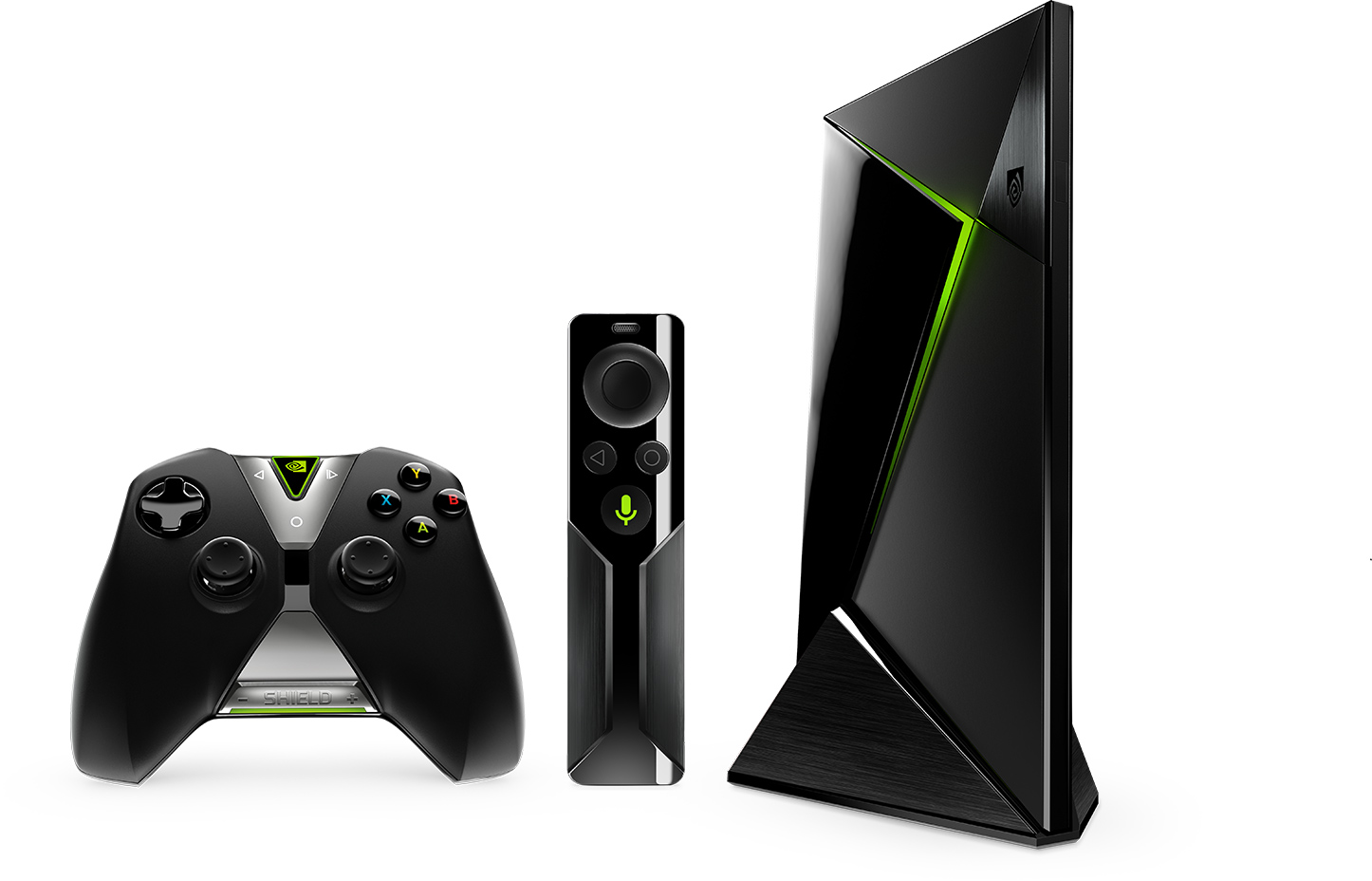
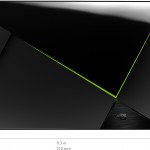
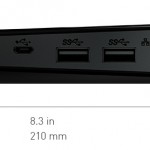
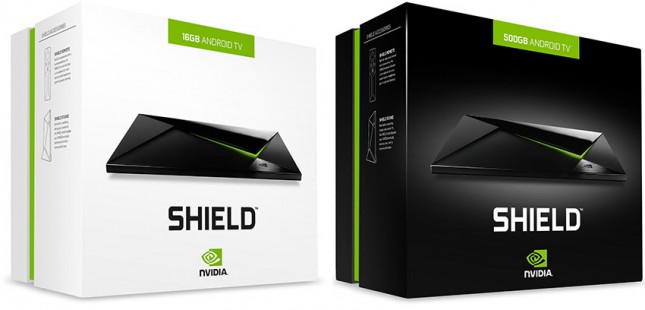

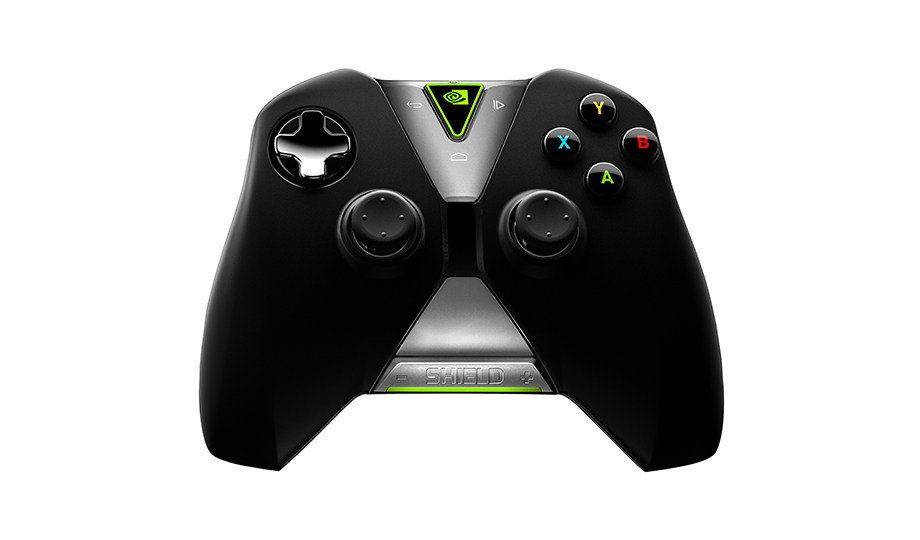
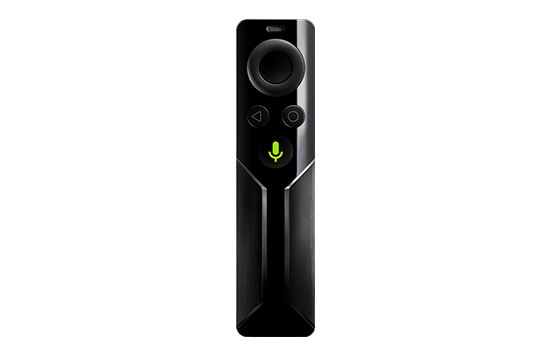

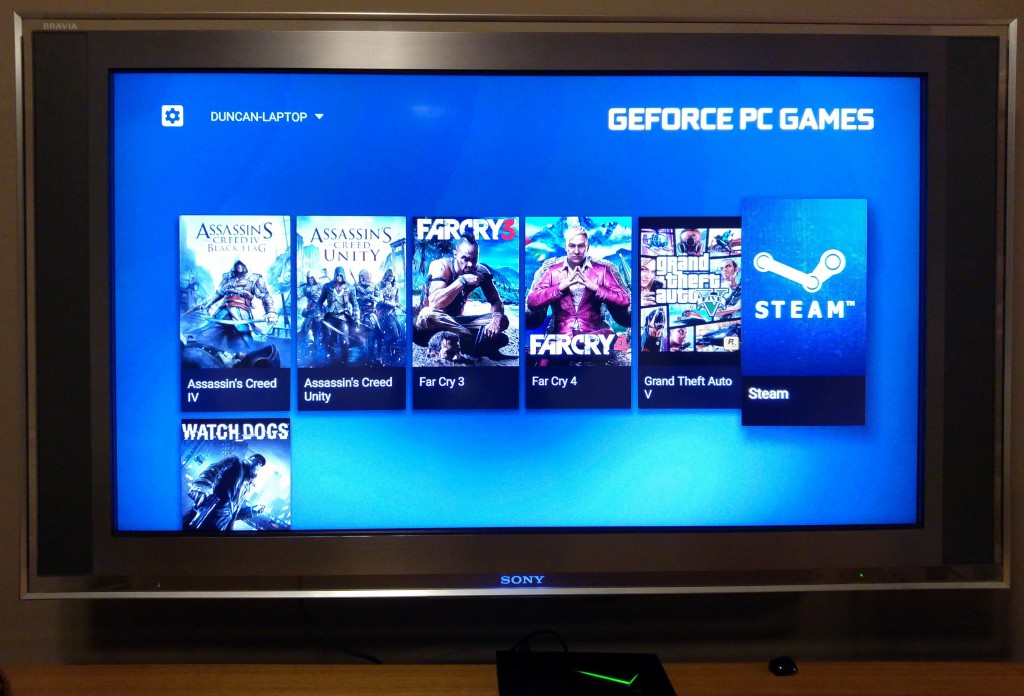



Did you have to replace the power adapter? what did you have to do to get it to work in Aus. cheers.
No just use a US/AU adapter.
Great article. For those who live outside US like me, you can access Netflix, Hulu and similar media stations on your Android/ Google TV by using UnoTelly or similar tools.
I’m not likely to buy said Shield TV but I enjoyed reading your thoughts about it Duncan. Great first effort!
A nice article, and one of the best I have read till date. I have been using Shield TV for almost 4 weeks now, and I can say I am having exactly the same experience as mentioned in the article.
One thing that I would like to add here is lack of browser support. I tried few browser like Opera and web browser for android tv, but was not satisfied with the experience, I think none of these browser support flash.
Does any one here had any luck with any browser that support flash, and why chrome is missing?
Agreed, I dispiratly tried to find a browser to use for catchup TV. You can install chrome to it via the playstore on a browser.
You’ll need the keyboard and mouse to get it even remotely close to working through.
Thanks D
Duncan, ive bought 2 from amazon and had them direct shipped. I didnt get the codes either until i emailed them (amazon) and asked for them. Once i did i had the codes in a few hours. You then have to redeem the codes with nvidia but i got them. I really like these little device , i,ve already decided to use it as my tv media devices. Hopeing nvidia bring them directly here and google improves the play store listing , i have one logged in with a US account and one aussie the difference in amount of titles… Read more »
I contacted Amazon and let’s say my outcome was less positive. I might try again. Thanks D
Well done Duncan on a very detailed and informative review. I’m very tempted to buy one of these when I get connected to the NBN but feel for those out there that will never see true NBN speeds. Hopefully Nvidia brings it to Aussie retail soon so we don’t have to keep buying devices with US plugs. Mind you with the Aussie dollar at around 70 US cents the Australia tax is gonna hurt. Nice work mate.
P.S my sister in Brisbane will have her NBN connected soon so you can upload you’re photos 😉
Excellent!
Yes Jamie mine cost me AU$457 shocking.
Damn, that’s almost kidney donation territory!
In depth review, but please either proof read, get someone else to proof read or maybe invest in Grammarly as your writing is full of grammar problems, typos and mistakes. When you write so much and expect others to read what you write, it should be mandatory, even courteous to do so.
Even your author’s blurb has issues: “Duncan has bee interested in technology” and ” Mary had a little Lamb”.
Being nice to a writer on their first day is also courteous. How feedback is delivered is ALSO important.
Thanks for reading Jorge.
It was written at the point where I couldn’t continue reading due to the issues and was somewhat frustrated, so perhaps could have been more pleasant, but it’s somewhat from the heart and I can’t see that I was mean, rude or insulting, particularly by comment section standards.
There’s constructive feedback there and suggestions on how the issues could be avoided in future as well. Make of it what you will.
Here at Ausdroid we blame our sloppy editors for things like that, not the guys that put the time and effort into writing stuff.
Entirely my fault for not reading through more thoroughly.
Thanks for the reply Chris. I wasn’t intending to blame or offend, I was just a bit frustrated at noticing the issues and jumped to the comment section to give the feedback.
Appreciate the acknowledgment. I do value Ausdroid and perhaps have high expectations on the level of quality that I think should come from articles here.
If you don’t like the articles or the service why are you here? I thought the article was one of the best ive read for a long time and the grammar didn’t bother me one bit. I follow Ausdroid for their excellent knowledge of Android and not their grammar. I’ve got an Nvidia Shield and have read many reviews and I was amazed how accurately this review portrayed the nvidia TV experience. By all means go ahead a read the WSJ etc and you will get perfect grammar and a nice misunderstanding of what the nvidia TV is all about.… Read more »
Never said I did not like the articles nor the service, I just pointed at where the writing quality could be improved. I made a criticism, gave feedback and suggestions on how to avoid the problems next time. I wasn’t friendly or pleasant about it, sure, but neither was I mean, rude or insulting. Poor grammar may not bother you, but it bothers a lot of people who try to read these pieces. The editor Chris in the comment below has acknowledged the issue. As for criticism at work, I actively seek it from my customers to learn what I… Read more »
I’m with you Jorge, poor grammar and punctuation is a pet hate. For instance, what you should have said above is “The editor, Chris, in the comment below, has acknowledged the issue.” Or even better – “The editor, Chris, has acknowledged the issue in the comment below.”
Keep fighting the fight, Jorge.
Sure, in a reply written in haste, late at night, on a smart phone, I wouldn’t be expecting high standards of grammar, particularly from someone who is not employed to write for the publication and when the writing is not subject to editing prior to release.
But you go ahead and continue to trawl comment sections to correct commenters on their grammar.
Fishing is more enjoyable when you’ve got a biter on the end of your hook. Thanks for helping me start my day with a smile.
Peace and happiness to all,
Mark.
It’s called “trolling” and its best done under the veil of anonymity.
Grammar Nazis are my pet hate. Well have to aggree to disagree.
Think on the Pro side you have to include that it has an Ethernet port which makes it one of the best GoogleCast (the protocol behind the ChromeCast device) receivers out there! I have already watched a fair amount of NBA TV on it and it performs floorlessly. Hopefully with Sony and JB HIFI (I think its them) putting out lots of ads for Android TV, some of the local networks will jump on board the Android TV train. I am also annoying local developers of Pocketcast to add Android TV support to Pocketcast. Don’t know I’m having much success!… Read more »